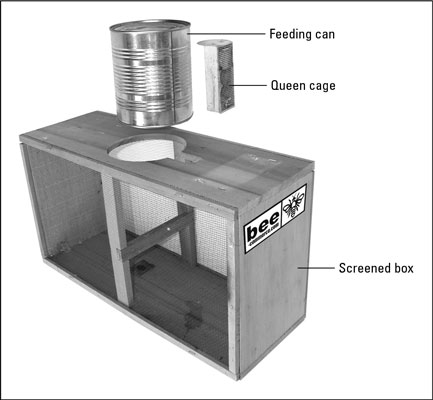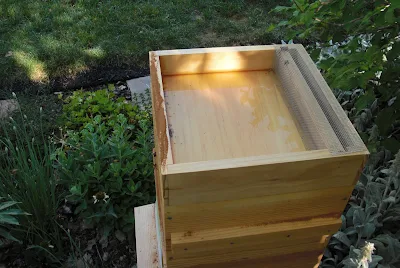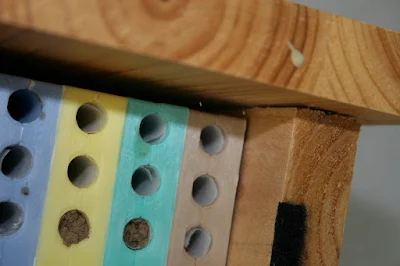IN SUMMARY: Two's company. Or possibly a crowd.
Plus read through so you don't make the same "get two hives" mistake I did.
A little goes a long whey.
I bought my first beehive in 2008 and the second in 2012. I treated my first hive with tung oil a couple of times but quickly gave up on it. Even when blended with citrus oil to carry it deeper into the wood, tung oil stinks and still doesn't last, so there was no point. Afterwards, I paid no attention to my woodenware because rotting out in Colorado with it's mere 14-inches of rain (in a good year) just doesn't happen. But here in the DC area with its 43-inch average and "extreme precipitation events happening more frequently," my hives started to mold almost on arrival. Fuzzy white mold. Polka dots of black mold. The entrance side of my top bar hive was turning black. Ugh. Something had to be done. In the photos below (taken last Fall), you can see how my cedar Warré hive and pine Top Bar Hive look before and after being coated with PolyWhey, a waterproof stain that's ideal for beehives. Don't they look great?
Left: untreated cedar. Right: stained with PolyWhey made by Vermont Natural Coatings, in Golden Cedar (mostly).Left: untreated pine. Right: Brackish Brown reminds me of my childhood violin.PolyWhey is a stir-it and apply-it dream to use. It's non-toxic,
barely has an odor, and cleans up with water. There's a LOT to like
about PolyWhey, too much to write about here, and I've already not answered your question about how many hives to start with for long enough, so here's some bullet points.
- It comes in over a dozen colors. Samples from Green Building Supply are really cost effective!
- It penetrates the wood yet an 8-ounce sample size is plenty for a three-story hive with some left over.
- Water sheds off the hives beautifully. Time will tell how long it lasts, and I promise to update the blog when/if they need retreating.
- There is a temperature/humidity window. I treated my hives back in September when the rain stopped for a hot minute in Virginia.
A little goes a long way.
Finally, to answer, "How many hives to start with?" If your budget only allows for one, that's how I started. It's a totally fine way to start but when my singleton swarmed it sure would've been handy to have an empty hive on hand. Especially with the recent jacked up cost of lumber, woodenware is not cheap but it is a long-lasting, good investment, so buy two if you can even if you can only populate one at first.
Do not get two different hive styles; that's the mistake I made. Even though both of my hives are "top bar hives," one is managed vertically and the other horizontally. The differences are enough to stymie your progress as a new beekeeper, which in turn can stymie the progress of your bees. Remember, your job first and foremost is to give the bees what they need, when they need it. In fact, it's best to anticipate their needs and have a plan in place, plus contingency plans, so their progress never loses momentum. That gets tricky when you're simultaneously new to bees and working different style hives. The less you're standing around scratching your head wondering what to do, the better off your bees will be.
I'm realizing just now that you may be wondering about more than woodenware, and probably want to know how many colonies to start. Many veteran beekeepers say to start with two or even three but I don't subscribe to that, at least not for the typical backyard. The ability of the environment to handle a large bee population should not be ignored. Honeybees are not native to the US, so every colony you keep puts competitive pressure on the native pollinator population. Especially in suburban backyards, even if well planted, there are limited nectar and pollen sources for the hundreds of native bee species with similar dietary requirements, like bumble bees. Starting with just one or two hives limits the competition while giving you time to find your footing, and an outyard for when you're ready for more.
If you're already a beekeeper, how many hives or colonies did you start with? And are you a native bee keeper, too?















